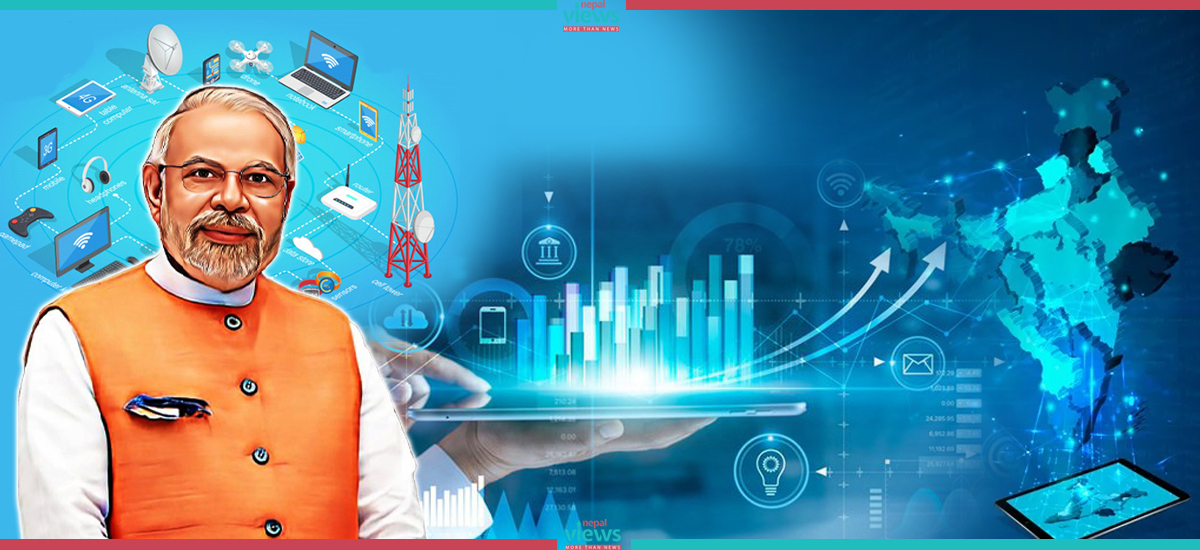Kathmandu: A recently published International Monetary Fund’s working paper titled ‘Stacking up the Benefits: Lessons from India’s Digital Journey’ has lauded India’s efforts in building up its digital infrastructure.
The paper stated that India has significantly advanced on its development goals, increased efficiency in the public sector and unlocked innovation in the private sector by adopting the approach of building Digital Public Infrastructure. Overall, India’s digital journey has been used as a platform to foster innovation and competition; expand markets; close gaps in financial inclusion; boost government revenue collection; and improve public expenditure efficiency.
What is India Stack?
Digital public infrastructure that are often used in India are collectively referred to as the “India Stack” and consists of three main blocks. These are unique identity (Aadhaar), complimentary payments systems (Unified Payments Interface, Aadhaar Payments Bridge, Aadhaar Enabled Payment Service), and data exchange (DigiLocker and Account Aggregator). Together they enable online, paperless, cashless, and privacy-respecting digital access to a variety of public and private services.
How India has benefitted from India Stack?
The IMF paper stated that India Stack has been used as a platform to foster innovation and competition; expand markets; close gaps in financial inclusion; boost government revenue collection; and improve public expenditure efficiency. For example, today in India, UPI accounts are used for 68 percent of all payment transactions by volume. The use of digital payments has expanded the customer base of smaller merchants, documenting their cash flow and improving access to finance. Roughly 4.5 million individuals and companies have benefited from easier access to financial services through the Account Aggregator, since it was first launched in August 2021, and adoption is increasing rapidly. This Digitalization has also accelerated formalization of the Indian economy, with approximately 8.8 million new taxpayers registered for the Goods and Service Tax between July 2017 and March 2022. This has helped India’s Government to soar up its tax revenues. Further, the inter-connected digital infrastructure has streamlined provision of Government services through platforms such as the DigiLocker where citizens can access documents issued by state and central government through one platform. It has also simplified the regulatory compliance in various sectors such as banking where now verification is simply done through digital means.
When the COVID-19 pandemic hit, India already had its digital infrastructure in place for providing social security benefits digitally though the Aadhaar platform. The digital backbone allowed India to scale its vaccine delivery quickly and overcome challenges such as large-scale internal migration. India’s digital technology underlying CoWIN has been deployed in Indonesia, Philippines, Sri Lanka and Jamaica to help facilitate their vaccination programs.
The government of India estimates that, up to March 2021, about 1.1 per cent of GDP in expenditure was saved due to the digital infrastructure and other governance reforms.
Lessons for Nepal
As Nepal advances its digitalization process and improves its internet penetration, it must explore the possibility of implementation of a domestic model that provides cross-linked digital services.
Nepal is already providing a set of services through its Nagarik application. Cross-linking it to other domains and other elements would remain a challenge. Separately, with advancement in digitalization, data-security and privacy along with digital literacy will remain major stumbling blocks for this endeavor.











